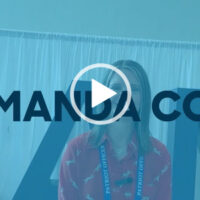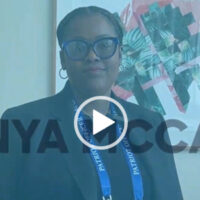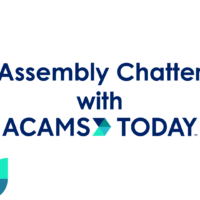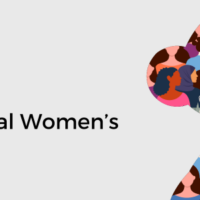
ACAMS Today sat down with Scotiabank’s Joseph Mari, CAMS, to discuss the Organization for Security and Co-operation in Europe (OSCE) report “Following the Money: Compendium of Resources and Step-by-step Guide to Financial Investigations Into Trafficking in Human Beings.”
In his role at Scotiabank as director, financial intelligence unit (FIU) and external partnerships in the financial crimes risk management (FCRM) division, Mari develops strategic partnerships aimed at mitigating financial crimes such as human trafficking and child exploitation. This aspect of his mandate led him to collaborate with OSCE and become the main author of the “Following the Money” report.
ACAMS Today: You have plenty of experience in human trafficking awareness, from being a global ambassador for Project Protect, to writing ACAMS Today articles, to being part of ACAMS conference sessions on the subject. How did you first become involved with the Liechtenstein Initiative?
Joseph Mari: I first became aware of the anti-human trafficking efforts of Liechtenstein in early 2017 via a workshop they held in collaboration with the United Nations University at the Grace Farms Foundation in New Canaan, Connecticut. The event, titled “Breaking Financial Chains,” saw two-time ACAMS AML Professional of the Year Peter Warrack and myself attend and engage in discussion on anti-human trafficking strategy with delegates from around the world.1 For me, this event was the beginning of things to come that would soon include the announcement and launch of the Liechtenstein Initiative’s “Blueprint for Mobilizing Finance Against Slavery and Trafficking,” as well as the connected work of the OSCE.2
AT: How does the “Following the Money” report tie into the larger goals of the Liechtenstein Initiative?
JM: The “Following the Money” report is the financial investigation tool of the Liechtenstein Initiative’s Blueprint and directly supports its first goal: compliance with laws against modern slavery and human trafficking. The report provides guidance on good practices related to conducting financial investigations into modern slavery and human trafficking and was produced by the OSCE in tandem with the Liechtenstein Initiative’s Financial Sector Commission. Good practices from around the world were compiled and synthesized, which will help mainstream financial investigations into trafficking and exploitation.
AT: Twenty-three documents were identified to be primary publications on trafficking in human beings (THB). What was the process of compiling these resources across organizations, industries and countries?
JM: Documents were identified by representatives of the United Nations University, the Liechtenstein Initiative’s Financial Sector Commission, the OSCE’s Office of the Special Representative and Co-ordinator for Combating Trafficking in Human Beings, and myself. Documents were initially assessed at a high level for a connection to the finances of trafficking but were eventually assessed a second time for more substantial information pertaining directly to financial investigations into trafficking and exploitation. What was considered to be substantial and direct information included the publication of typologies, red flag indicators and insights into how investigations should be carried out. Ultimately, the 23 documents that made their way into the report fell into one of three publication criteria: documents from intergovernmental organizations and agencies; documents from independent national FIUs; and documents from civil society, nongovernmental organizations and the private sector.
AT: Having written about organ trafficking in the past, why was it important to include THB for the purpose of organ removal (THB/OR) as a form of human trafficking along with THB for sexual exploitation and THB for labor exploitation?
JM: The OSCE’s Office of the Special Representative and Co-ordinator for Combating Trafficking in Human Beings is guided by the scope of the Palermo “Protocol to Prevent, Suppress and Punish Trafficking in Persons Especially Women and Children.”3 This definition of organ trafficking is more focused than the one from the research I have previously published on as it addresses the exploitation of an individual for the purpose of removing an organ, as opposed to the standalone organ once separated from the individual. With that said, I personally am very happy that we had a chance to include THB/OR in the report. This is a topic that is still very new yet of great interest to anti-financial crime professionals, as noted by the reception to last year’s organ trafficking panel at the ACAMS 18th Annual AML & Anti-Financial Crime Conference.
AT: According to the “Following the Money” report, what are the indicators of THB and how do they differ?
JM: Indicators of THB that were identified in the development of this report are broken down into three categories: behavioral, know your customer (KYC) and transactional, with each category providing unique insight into the financial operations of traffickers. This categorization was first identified in the European Bankers Toolkit for Tackling Human Trafficking but was found to be generally helpful in segmenting indicators for the report as well.
Behavioral indicators are largely derived from visual cues projected by an individual who may be trapped in a cycle of trafficking or by traffickers themselves. KYC indicators refer to possible red flags derived from collecting required information from a customer, such as address and identification. Lastly, transactional indicators can trigger at any time after the account is open and, due to the rise in digital banking solutions, may not require face-to-face interaction.
AT: Do you believe there is a case for breaking down indicators of THB by gender and by geographic region?
JM: There can be quite a bit of generalizations made when discussing trafficking from a financial crimes perspective, particularly outside of more experienced law enforcement (LE) circles. However, generalizations in terms of geographic region and affected gender are not entirely unfounded. For example, research for the report found that of all the indicators and red flags identified, for all types of trafficking captured, almost 70% were found to be duplicative across the documents from OSCE-participating states. This is a result, in part, of the global banking system and regulatory recommendations put forth by all financial institutions (FIs) and by groups such as the Financial Action Task Force, which limit how bad actors can participate in the banking system. On the topic of gender, research shows that women and children are disproportionately affected. With that said, generalizations are still not advisable because they could further cloak unique activity connected to those not captured in the predominantly affected areas of trafficking. Breaking down indicators and being precise not only shows an evolution in understanding amongst anti-financial crime professionals, but will also ensure that those engaged in trafficking historically underrepresented vulnerable groups are brought into the spotlight.
AT: How can FIs begin to distribute the “Following the Money” report within their organizations and how should they use it?
JM: The “Following the Money” report is free to download on the OSCE’s website.4 Once downloaded, I would recommend that Part II of the report, the Step-by-Step Guide to Financial Investigations Related to Trafficking in Human Beings (THB), be reviewed first as it will outline the framework needed to implement the indicators and red flags identified in Part I successfully. Once a sustainable and scalable human trafficking investigative framework is set up, the report can be consulted when needed as a quick reference guide.
AT: What are the most important takeaways from the “Following the Money” report?
JM: Given the uniqueness of this document, it is hard to choose a particular portion as the most important. At a very foundational level, I like the way the report highlights the relevance of the Palermo Protocol and differences between trafficking and smuggling, which is something I find those on the private side tend to overlook in favor of digging right into a money laundering investigation. In addition, I would strongly recommend Section 5.1: Recommendations, as it calls into focus what is needed to advance our collective effectiveness against the finances of trafficking as we embark on a new decade.
AT: You have been involved in the fight against human trafficking for a while now. Are there victories we claim against THB? Can you give some examples of those victories?
There have been many victories over the years directly related to the efforts of anti-financial crime professionals
JM: There have been many victories over the years directly related to the efforts of anti-financial crime professionals, from assisting in locating a missing person, to contributing to LE efforts in putting a trafficker behind bars. This is a result of the progressive thought leaders who support efforts in anti-human trafficking and exploitation, such as our own group chief anti-money laundering officer and last year’s ACAMS AML Professional of the Year Stuart Davis, as well as public and private sectors working closer together for the common cause of stopping the traffickers’ profits. More recently, I have watched the measure of success evolve beyond the criminal justice aspect and into restorative efforts, such as providing financial services for survivors of human trafficking who may have had their financial lives hijacked by their trafficker. This example relates back to the Blueprint’s fourth goal: providing and enabling effective remedy for modern slavery and human trafficking harms. As part of this goal, I am proud to report that Scotiabank was the first bank in this initiative to open accounts for survivors of trafficking. We did so with the outstanding support of a Canadian-based front-line service provider Deborah’s Gate, a branch of the Salvation Army, under the leadership of Larissa Maxwell, and internal oversight by Gilberto Cedolia, senior manager, FCRM, executive office at Scotiabank.5
Interviewed by: Stephanie Trejos, CAMS, associate editor, ACAMS, Miami, FL, USA, strejos@acams.org
- “25 keys to unlock the Financial Chains of Human Trafficking and Modern Slavery,” United Nations University, July 2017, https://collections.unu.edu/eserv/UNU:6232/BreakingtheFinancialChains_FullBooklet_Web.pdf
- “A Blueprint for Mobilizing Finance Against Slavery and Trafficking: Final Report of the Liechtenstein Initiative’s Financial Sector Commission on Modern Slavery and Human Trafficking,” Liechtenstein Initiative, September 2019, https://www.fastinitiative.org/wp-content/uploads/Blueprint-DIGITAL-3.pdf
- “Protocol to Prevent, Suppress and Punish Trafficking in Persons Especially Women and Children, supplementing the United Nations Convention against Transnational Organized Crime,” Office of the United Nations High Commissioner for Human Rights, November 15, 2000, https://www.ohchr.org/en/professionalinterest/pages/protocoltraffickinginpersons.aspx
- “Following the Money: Compendium of Resources and Step-by-step Guide to Financial Investigations Into Trafficking in Human Beings,” Organization for Security and Co-operation in Europe, November 7, 2019, https://www.osce.org/secretariat/438323
- “Survivors of human trafficking get help rebuilding financial independence,” Scotiabank, February 21, 2020, https://www.scotiabank.com/ca/en/about/perspectives.articles.impact.human-trafficking-awareness.html










